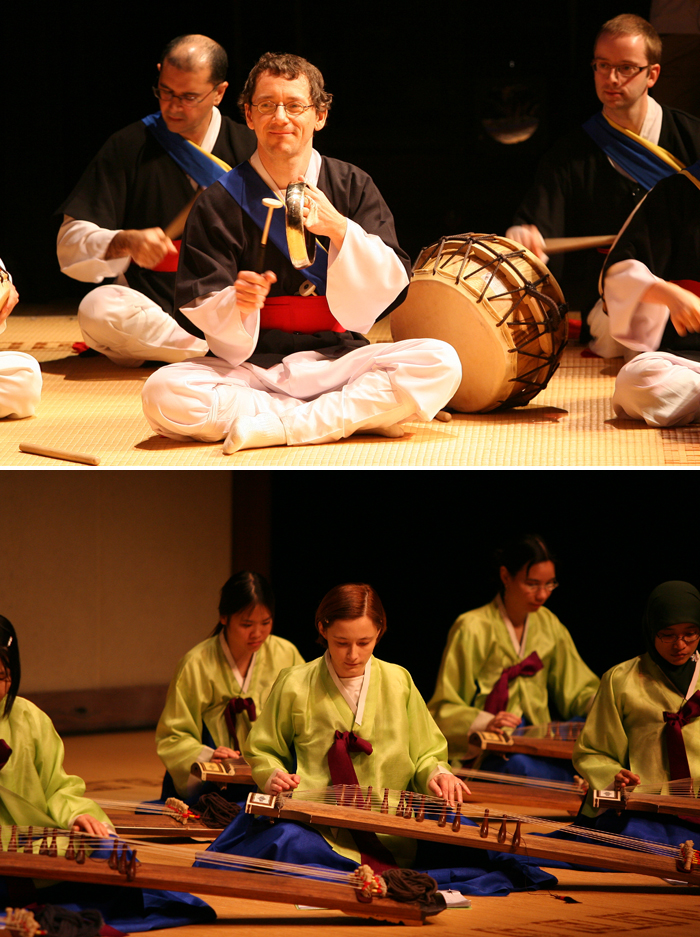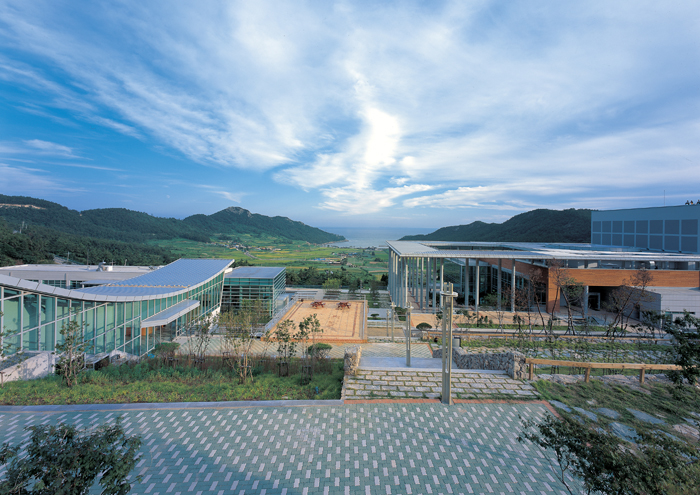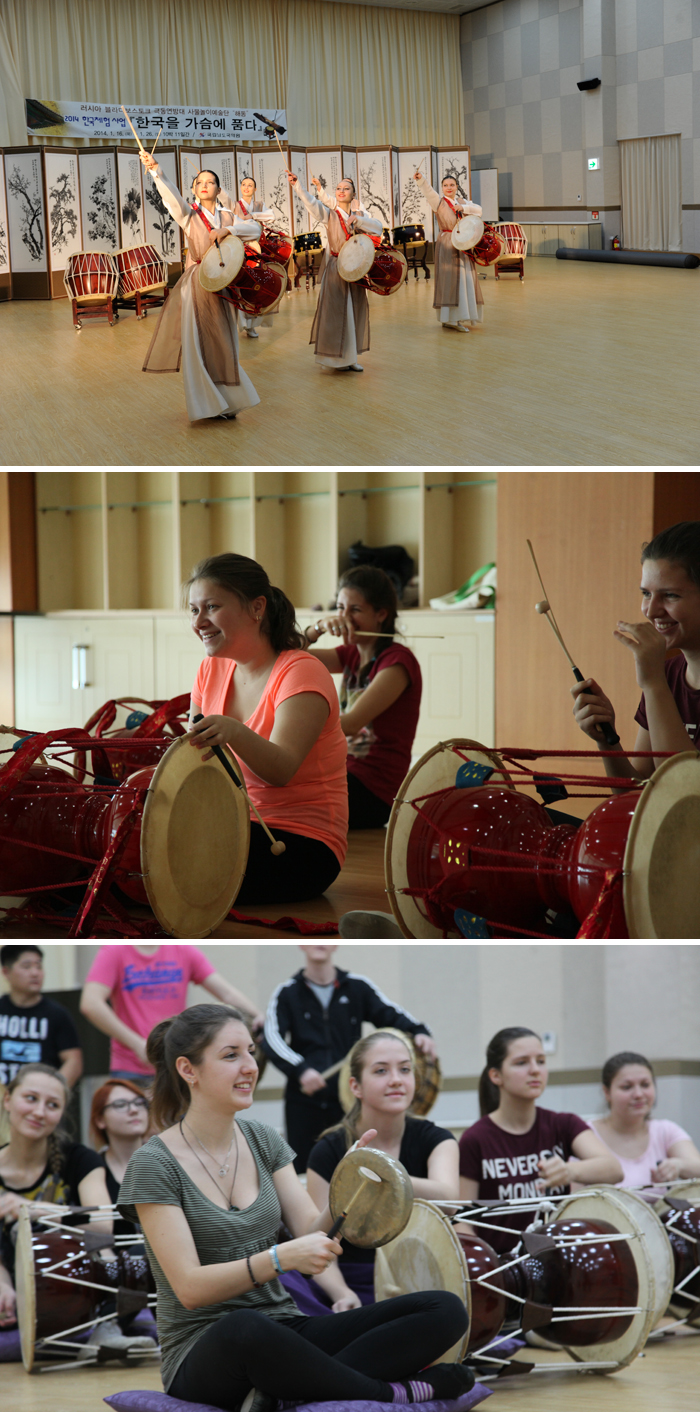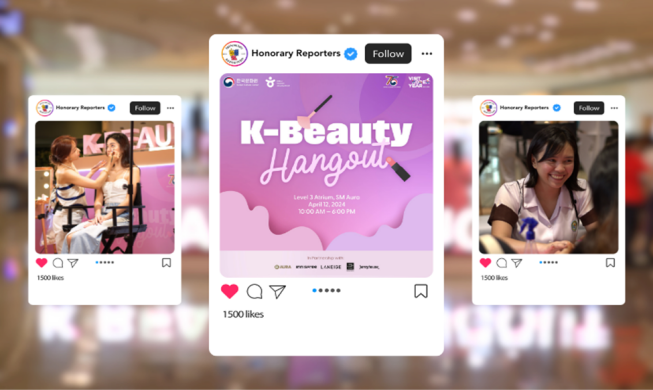-
 Korea.net's 24-hour YouTube channel
Korea.net's 24-hour YouTube channel- NEWS FOCUS
- ABOUT KOREA
- EVENTS
- RESOURCES
- GOVERNMENT
- ABOUT US
Gugak, a catchall phrase covering all types of traditional Korean music, has increasingly widened its fan base over recent years. The National Gugak Center in Seoul has been running a professional gugak class since 1993 in which experts teach students the basics of traditional music. The basic gugak trio of instruments includes the janggu, an hourglass-shaped drum, the gayageum, a 12-stringed zither, and the haegeum, a stringed instrument similar to a fiddle. In 2013, about 170 students enrolled in classes there, a five-fold increase over the number of students who studied there in its first year of operation. Last year, the center also offered more than 50 “experience programs,” easier than professional lessons, nearly double what it offered in 2005.

Seoul is not the only city where gugak has proven popular. It is also extremely popular in Jindo, Jeollanam-do (South Jeolla Province), a city and an island off the southern coast of Korea.
You can feel the music up close at the Jindo National Gugak Center. The Jindo branch was established in 2004, becoming the third national gugak center, following the Seoul branch (1951) and the Namwon branch (1992) in Jeollabuk-do (North Jeolla Province). The fourth center was built in 2008 in Busan, Gyeongsangbuk-do (North Gyeongsang Province).
The Jindo National Gugak Center is located in a beautiful neighborhood of the island city. The picturesque wide open sea unfolds to the front and Yeogwisan Mountain, standing at 457 meters, sits at the back. A growing number of tourists have been attracted to the city of 32,000 by the merits of the gugak center where they can enjoy traditional music and soak in the beauty of the landscape.

The music center, covering 113,251 square meters, is equipped with practice rooms, performance stages and accommodation facilities. It is the only music center in Korea where visitors can stay for a few days to experience gugak programs. The facility can house about 150 people at a time, one of the appealing factors for visitors.
In its ten years of operation, a total of 480,000 visitors have attended classes here, and the first year alone saw around 25,000 visitors. There have been a total of 1,024 performances, seen by more than 440,000 people, and the 684 “experience programs” have been attended by 34,700 people.
One of the most popular performances takes place every Friday at 7 p.m. when various styles of gugak are showcased, including pansori, a narrative epic song, folk songs and samulnori, a percussion quartet, accompanied by a pansori master’s singing and the gayageum. Also, performances about gut, traditional shamanic rituals, are held on a regular basis, with professional gut artists in attendance. This is a rare opportunity for visitors to get a glimpse into ancient rites and traditions.
The Jindo National Gugak Center offers a number of optional programs. One of the most popular programs is a two-day course that takes place every Friday and Saturday. The program consists of gugak music lessons and ganggangsuwollae dance lessons, a traditional group–dance. Attendees also get to do some sightseeing around the more popular southern island travel destinations. Registration costs KRW 60,000 for two. It includes admission to the “experience program,” daily meals and accommodations. Space is extremely limited, so it is highly recommended to make a reservation two to three months in advance.
Guests are from all different backgrounds. Some corporate members visit the center as part of their in-house training sessions, while other attendees are enrolled as part of a professional team-building exercise. There is a special program for ethnic Koreans from abroad, for adoptees visiting the land of their biological parents and for other visitors from overseas which has been garnering rave reviews.

Earlier this year, the Russian art troupe Haedong from the Far Eastern Federal University in Vladivostok visited Jindo for 11 days to take part in various classes and performances. According to the Jindo National Gugak Center, the students showed a great response and were really enthusiastic about learning gugak. One of the students was quoted as saying, “The simple gugak rhythm seems to capture both the ears and the heart. It is just indescribable.”
Finally, if you turn on the Olympics these days, you might see performers from the Ethnos Arts School, from Sakhalin, Russia, who studied at the Jindo National Gugak Center and who are playing traditional Korean music at various events surrounding the Sochi Winter Olympics.
By Lee Seung-ah
Korea.net Staff Writer
slee27@korea.kr

Students study traditional Korean music firsthand at Seoul’s National Gugak Center. (photos courtesy of the National Gugak Center)
Seoul is not the only city where gugak has proven popular. It is also extremely popular in Jindo, Jeollanam-do (South Jeolla Province), a city and an island off the southern coast of Korea.
You can feel the music up close at the Jindo National Gugak Center. The Jindo branch was established in 2004, becoming the third national gugak center, following the Seoul branch (1951) and the Namwon branch (1992) in Jeollabuk-do (North Jeolla Province). The fourth center was built in 2008 in Busan, Gyeongsangbuk-do (North Gyeongsang Province).
The Jindo National Gugak Center is located in a beautiful neighborhood of the island city. The picturesque wide open sea unfolds to the front and Yeogwisan Mountain, standing at 457 meters, sits at the back. A growing number of tourists have been attracted to the city of 32,000 by the merits of the gugak center where they can enjoy traditional music and soak in the beauty of the landscape.

The Jindo National Gugak Center is located in a beautiful neighborhood of the island city. (photo courtesy of the Jindo National Gugak Center)
The music center, covering 113,251 square meters, is equipped with practice rooms, performance stages and accommodation facilities. It is the only music center in Korea where visitors can stay for a few days to experience gugak programs. The facility can house about 150 people at a time, one of the appealing factors for visitors.
In its ten years of operation, a total of 480,000 visitors have attended classes here, and the first year alone saw around 25,000 visitors. There have been a total of 1,024 performances, seen by more than 440,000 people, and the 684 “experience programs” have been attended by 34,700 people.
One of the most popular performances takes place every Friday at 7 p.m. when various styles of gugak are showcased, including pansori, a narrative epic song, folk songs and samulnori, a percussion quartet, accompanied by a pansori master’s singing and the gayageum. Also, performances about gut, traditional shamanic rituals, are held on a regular basis, with professional gut artists in attendance. This is a rare opportunity for visitors to get a glimpse into ancient rites and traditions.
The Jindo National Gugak Center offers a number of optional programs. One of the most popular programs is a two-day course that takes place every Friday and Saturday. The program consists of gugak music lessons and ganggangsuwollae dance lessons, a traditional group–dance. Attendees also get to do some sightseeing around the more popular southern island travel destinations. Registration costs KRW 60,000 for two. It includes admission to the “experience program,” daily meals and accommodations. Space is extremely limited, so it is highly recommended to make a reservation two to three months in advance.
Guests are from all different backgrounds. Some corporate members visit the center as part of their in-house training sessions, while other attendees are enrolled as part of a professional team-building exercise. There is a special program for ethnic Koreans from abroad, for adoptees visiting the land of their biological parents and for other visitors from overseas which has been garnering rave reviews.

The Russian art troupe Haedong, from the Far Eastern Federal University in Vladivostok, visited the Jindo National Gugak Center on January 16 for an eleven-day program. They learned gugak and explored some popular travel destinations. (photos courtesy of the Jindo National Gugak Center)
Earlier this year, the Russian art troupe Haedong from the Far Eastern Federal University in Vladivostok visited Jindo for 11 days to take part in various classes and performances. According to the Jindo National Gugak Center, the students showed a great response and were really enthusiastic about learning gugak. One of the students was quoted as saying, “The simple gugak rhythm seems to capture both the ears and the heart. It is just indescribable.”
Finally, if you turn on the Olympics these days, you might see performers from the Ethnos Arts School, from Sakhalin, Russia, who studied at the Jindo National Gugak Center and who are playing traditional Korean music at various events surrounding the Sochi Winter Olympics.
By Lee Seung-ah
Korea.net Staff Writer
slee27@korea.kr
Most popular
- First hearing-impaired K-pop act hopes for 'barrier-free world'
- Event 'K-Beauty Hang Out' draws hundreds in Philippines
- Ceremony in Seoul inducts 2,641 content creators of Korean culture
- 'Mad Max' director impressed by 'cinema-literate' Korean viewers
- Cultural spring festival Seoul Festa to start on May 1














